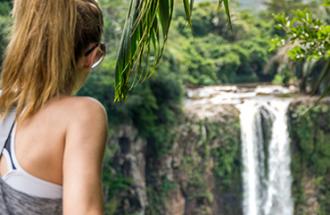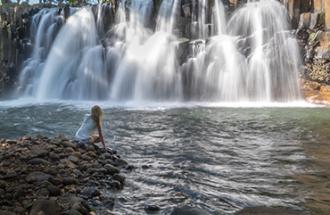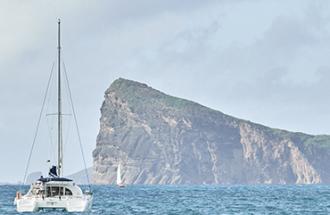Mauritius for Nature Lovers
Mauritius is the ideal getaway destination to get closer to nature. Besides its beautiful white sandy beaches, the island features an unexpected lush nature. From protected forests to mountains and exceptional sites, Mauritius will charm nature lovers, whether you love sports or are simply looking for discoveries.
The Pamplemousses Botanical Garden is a must-see during your holidays in Mauritius. Also known as the Sir Seewoosagur Ramgoolam Botanical Garden, this wonderful garden created over 300 years ago, houses a multitude of native and endemic plants and the famous giant water lily ponds. The youngest will be happy to approach the tortoises and other animals living in the garden. The Botanical Garden in Curepipe is a haven of tranquillity just a few minutes from the hustle and bustle of the city centre. A walk in this garden dating back to 1870 is a must. Rejuvenate before you hit back the road, surrounded by the beautiful endemic trees, the small lake and the river that flows through the beautiful green spaces.
Also in Curepipe, the Trou aux Cerfs is often an unexpected site for tourists. It is a volcano crater surrounded by houses, and very popular among walkers and joggers. Take a breath of fresh air while enjoying the view of the centre of the island from above.
Another geological curiosity that is to be seen in the centre of the island, heading east, is the caves of Pont Bon Dieu. The island being volcanic, several lava tubes were formed during the various eruptions. The one at Pont Bon Dieu, located at Brisée Verdière in the middle of sugarcane fields, houses a whole colony of swifts and other animals.
Although the area occupied by endemic forests has significantly decreased today, there are protected forests in which you will be able to fully immerse in nature. In the west, the Black River Gorges National Park is perfect for family hikes, with marked trails and an information centre to learn more about the flora and fauna of the region. Other forests such as the Bras d'Eau National Park in the East, Plaine Sophie in the centre are also accessible, and Ebony Forest in Chamarel as well.
Chamarel is one of the most preserved villages of the island with a lush environment. One of the most visited sites is the Seven Coloured Earth, with its unique geological topography. Discover dunes of multiple shades produced by the oxidation of minerals contained in the soil. Nearby, you can admire the stunning Chamarel waterfall from the promontory and access the Ebony Forest. If you have some time, take a stroll in the village and breathe some fresh air before continuing your nature expedition.
The peaks of the island are also to be added on your to-do list if you are interested in nature. Several mountains are accessible for climbing, some tougher than others. Different options are available to you, including Le Morne Mountain in the south, which is also part of the UNESCO World Heritage, with a breath-taking view of the ocean as you climb up. Le Pouce and Pieter Both Mountains are also popular in the centre. Discover a completely different climate and environment from that of the coastal region. The climbing usually starts from St Pierre. In all cases, it is recommended to be accompanied by a seasoned guide.
Rochester Falls in the south is also an unmissable site. To get there, you have to go through the village of Souillac and along the cane fields. And there, something amazing awaits you. The waterfall is formed by basaltic organs on which flows the water and it’s unique. You can have a swim to refresh or shoot the local youth jump from the top of the falls with your camera.
In the East, Ile aux Aigrettes is worth a visit for nature lovers. The islet in the Mahebourg region is a 27-hectare reserve that is part of the Mauritian Wildlife Foundation (MWF) conservation and rehabilitation program. The island is home to a multitude of endemic plants and animals, many of which are in danger of extinction. Some of them only live on Ile aux Aigrettes, including the Telfair Skink. Several sculptures of extinct species also adorn the tracks. The meeting point for the crossing of the lagoon is at Pointe Jérôme. The guide on-site will lead the visit and explain the huge conservation work carried out by the MWF for 35 years.
Nature sites and parks in Mauritius are mostly free, with the exception of a few such as the Ebony Forest and Ile aux Aigrettes, which funds are used to finance conservation work.




